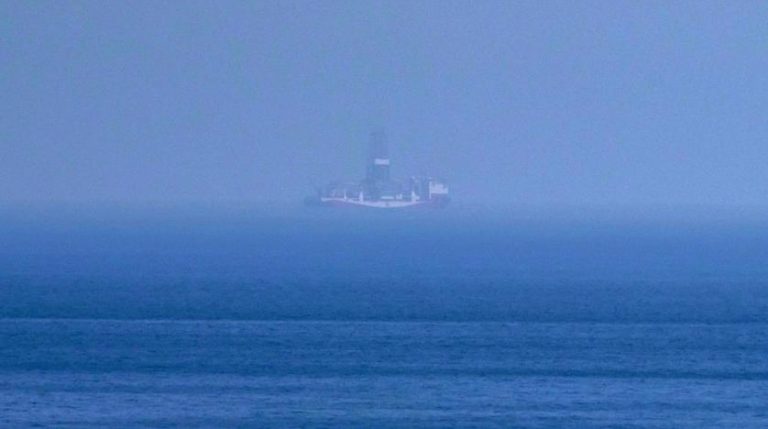Putin’s pipelines to power

Over the last year, predictions of serious struggles for Russian President Vladimir Putin – or even his political demise – have been increasingly frequent. A recent article in The Economist, “An awful week for Vladimir Putin,” is just one example. But it is Putin biographer and New York Times correspondent Steven Lee Myers whose assessment rings most true: “Putin,” Myers has repeatedly said to me, “always wins.”
Maybe “always” isn’t quite true. Russia’s economy is expected to grow by only 1% this year, owing to lagging export diversification, large-scale capital flight, and low levels of foreign direct investment linked to Western sanctions imposed after the country’s 2014 annexation of Crimea. As a result, Putin’s approval rating has declined somewhat from its annexation-fueled high of 83% in July 2014.
But 61% of Russians still rate Putin’s performance positively. Most democratic leaders can only dream of such favor with the public. Fewer than 43% of Americans approve of President Donald Trump, for example. In fact, the same incoherent and combative US policies toward Europe, China, Turkey, and others that have contributed to Trump’s unpopularity have fueled Putin’s popularity, by handing him a series of tactical victories.
For example, a lack of effective US engagement in Syria has pushed Turkey into Russia’s arms. In particular, in October 2015, the United States withdrew its Patriot missiles from southeastern Turkey, which had been deployed after the country appealed to its NATO allies to guard against missile threats from neighboring Syria. In 2017, the US offered to sell Turkey Patriot missiles, but without the underlying technology.
So Turkey reached a multibillion-dollar arms deal with Russia instead, despite the outrage of its NATO partners. (Beyond Putin’s approval ratings, America’s self-proclaimed master deal-maker Trump should envy his Russian counterpart’s negotiating skills.) In retaliation for Turkey’s decision to acquire Russian S-400 missile systems, the US has threatened sanctions and blocked Turkey from obtaining F-35 stealth fighters, suspending the country’s participation in a program to build them.
But Turkey knows that it is Russia, not the US, that is shaping the Syria conflict, and will play a leading role in the country’s potentially lucrative reconstruction effort, making it a much more desirable partner there. Strengthening the bilateral relationship further, Putin and Turkish President Recep Tayyip Erdoğan are about to inaugurate the TurkStream gas pipeline connecting their two countries.
Russia has also launched a massive new gas pipeline project with China, worth $400 billion over 30 years, and is negotiating another. Here, too, the Trump administration’s actions – in particular, its bitter (and self-defeating) trade war against China, which may well continue, despite the two countries’ recent “phase one” agreement – created a lucrative opening that Putin was quick to seize.
The pipeline project, according to Putin, takes bilateral “strategic cooperation in energy to a qualitative new level” and supports progress toward the goal, set with Chinese President Xi Jinping, “of taking bilateral trade to $200 billion by 2024” – the year Putin’s “final” presidential term ends. Perhaps he hopes that the fruits of such engagement will strengthen his position enough to enable him to remain in power, whether as president or in another position, such as security chief, endowed with greater powers.
Putin has picked up another gas-related win with regard to Ukraine, whose national oil and gas company Naftogaz just received a $2.9 billion payment from Russia’s Gazprom to settle a 2017 Stockholm arbitration ruling. The financial settlement was part of a larger deal between the two companies: a five-year plan, starting January 1, to ship Russian gas to Europe through Ukrainian pipelines. Naftogaz also agreed to drop another lawsuit against Gazprom.
Although fears of being under Putin’s thumb fueled the protests that ousted Ukraine’s pro-Russian president, Viktor Yanukovych, in 2014 – leading directly to Russia’s annexation of Crimea and Russia-backed separatists’ takeover of eastern Ukraine – the fear of confronting Russia alone is even greater. And, with Ukraine at the center of Trump’s just-concluded impeachment by the US House of Representatives and upcoming trial in the Senate, the US cannot be considered a reliable partner.
This doesn’t mean Ukrainian President Volodymyr Zelensky is going to roll over for Russia. He agreed with the Kremlin on an exchange of 200 prisoners in the ongoing war in eastern Ukraine – the second prisoner exchange this year. The recent pipeline deal can also be considered a win for Ukraine: Gazprom had previously insisted on a one-year deal, because it already has the Nord Stream-1 pipeline, which crosses the Baltic Sea to Germany, and will soon complete Nord Stream-2.
But Russian negotiators eased their position, perhaps partly in the hope of easing resistance to the Nord Stream project. That resistance includes sanctions, included in the 2020 US defense budget, on companies working on Nord Stream-2, which the US argues would give Russia too much leverage over America’s European allies, as well as those working on TurkStream.
It is not just Russia that wants Nord Stream to work. Germany, the main recipient of the Russian gas, argues that its energy policy should be decided in Europe, not the US. When a Swiss contractor obediently (if reluctantly) suspended its work in response to the sanctions, the Germans immediately suggested that they would find another way to complete the work as soon as possible.
Russian officials echoed this sentiment, noting that Gazprom has already lined up other companies prepared to take over. There is “nothing to worry about,” claims Prime Minister Dmitry Medvedev, especially given the gas-transit arrangement with Ukraine. As in the Middle East and China, Putin knows that a moment when Europe’s relationship with the US is severely strained is the ideal time to strengthen its position vis-à-vis its neighbor.
Putin may not have a winning long-term strategy to save Russia’s economy, but his pipeline politics have led to a series of impressive foreign-policy victories. This approach may give him enough prestige to continue his long winning streak.








